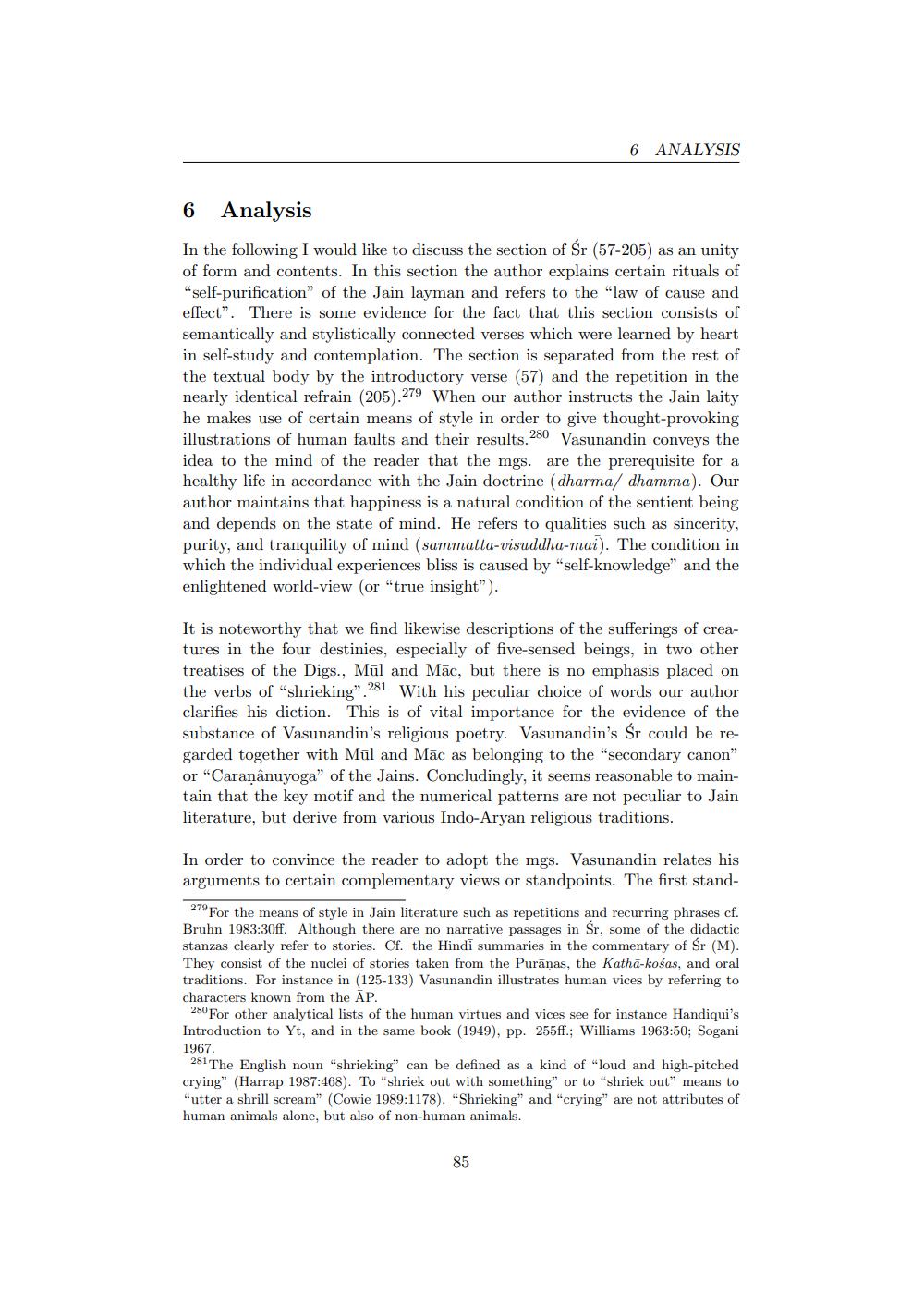________________
6 ANALYSIS
6
Analysis
In the following I would like to discuss the section of Śr (57-205) as an unity of form and contents. In this section the author explains certain rituals of "self-purification of the Jain layman and refers to the "law of cause and effect". There is some evidence for the fact that this section consists of semantically and stylistically connected verses which were learned by heart in self-study and contemplation. The section is separated from the rest of the textual body by the introductory verse (57) and the repetition in the nearly identical refrain (205).279 When our author instructs the Jain laity he makes use of certain means of style in order to give thought-provoking illustrations of human faults and their results.280 Vasunandin conveys the idea to the mind of the reader that the mgs. are the prerequisite for a healthy life in accordance with the Jain doctrine (dharma/ dhamma). Our author maintains that happiness is a natural condition of the sentient being and depends on the state of mind. He refers to qualities such as sincerity, purity, and tranquility of mind (sammatta-visuddha-mai). The condition in which the individual experiences bliss is caused by "self-knowledge" and the enlightened world-view (or "true insight").
It is noteworthy that we find likewise descriptions of the sufferings of creatures in the four destinies, especially of five-sensed beings, in two other treatises of the Digs., Mūl and Māc, but there is no emphasis placed on the verbs of "shrieking" 281 With his peculiar choice of words our author clarifies his diction. This is of vital importance for the evidence of the substance of Vasunandin's religious poetry. Vasunandin's Sr could be regarded together with Mūl and Māc as belonging to the "secondary canon" or "Caranânuyoga" of the Jains. Concludingly, it seems reasonable to maintain that the key motif and the numerical patterns are not peculiar to Jain literature, but derive from various Indo-Aryan religious traditions.
In order to convince the reader to adopt the mgs. Vasunandin relates his arguments to certain complementary views or standpoints. The first stand
279 For the means of style in Jain literature such as repetitions and recurring phrases cf. Bruhn 1983:30ff. Although there are no narrative passages in Śr, some of the didactic stanzas clearly refer to stories. Cf. the Hindi summaries in the commentary of Sr (M). They consist of the nuclei of stories taken from the Purānas, the Katha-kośas, and oral traditions. For instance in (125-133) Vasunandin illustrates human vices by referring to characters known from the AP.
280 For other analytical lists of the human virtues and vices see for instance Handiqui's Introduction to Yt, and in the same book (1949), pp. 255ff.; Williams 1963:50; Sogani
1967
28 The English noun "shrieking can be defined as a kind of "loud and high-pitched crying" (Harrap 1987:468). To "shriek out with something" or to "shriek out" means to "utter a shrill scream" (Cowie 1989:1178). "Shrieking" and "crying" are not attributes of human animals alone, but also of non-human animals.
85




